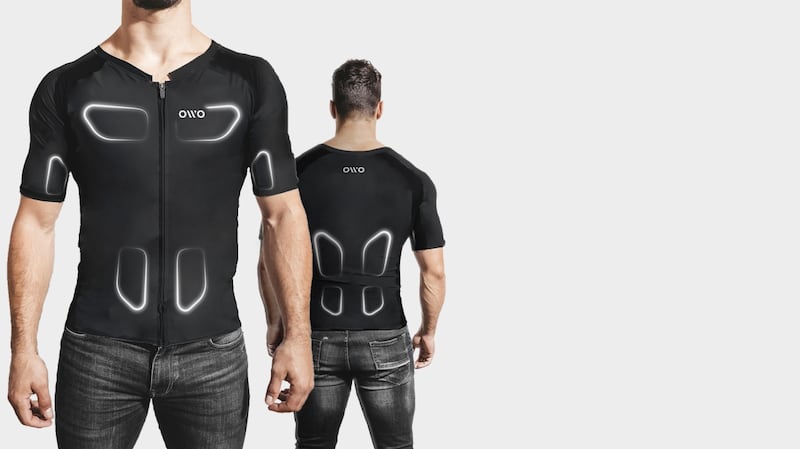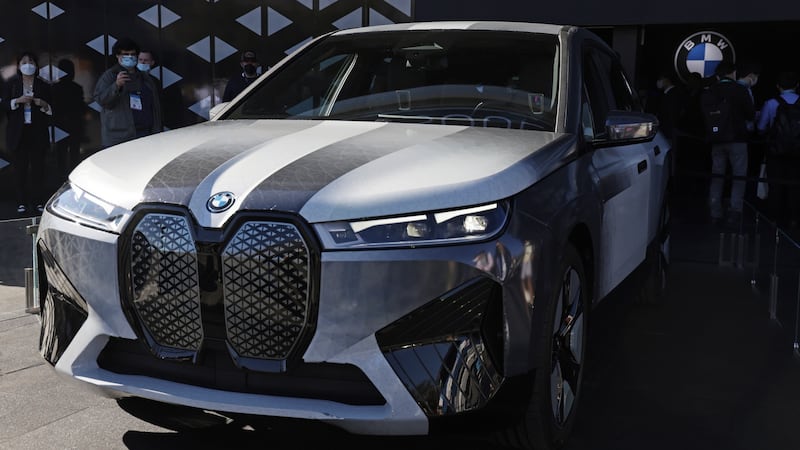The annual CES show was back with a bang this year. It may have had to close its doors a day early and deal with numerous cancellations thanks to the surge in Covid-19 cases, but CES still managed to create a buzz in Las Vegas and further afield.
In among the usual crop of giant TVs and next-generation earbuds there were self-heating lunchboxes from Steambox and non-invasive pelvic floor toners from Elidah. Robots littered the show floor, and smart home gadgets stepped up their game.
So what can we look forward to in 2022?
Smarter glasses
CES is usually the stage for the announcement of the next generation of wearables, and 2022 was no exception. Smart glasses were supercharged and smarter than ever.
Deep Optics showed off a pair of adaptable glasses, dubbed 32 North Glasses. The glasses have dynamic Liquid Crystal lenses that can switch from sunglasses to reading glasses in a single swipe, and can be customised through the app to fit your reading prescription.
Vuzix meanwhile showed off its Vuzix Shield smart safety glasses. The glasses, which are aimed at enterprise users, are lightweight and prescription ready, with ultra-slim, binocular waveguides that are powered by a pair of micro-LED projectors to generate video with contextual information. The idea is to give wearers hands-free access to support on the job, connecting wirelessly to smartphone for calls and with integrated speakers for audio.
TCL also showed off the second-generation version of its NxtWear Air wearable glasses, which let you view your smartphone content on dual 1080p micro OLED that are embedded in the lenses.
Greener tech
Samsung unveiled its SolarCell remote last year, with a built-in solar panel to help eliminate battery waste. But the latest version takes that a step further. Forget about depending solely on solar charging; Samsung's newest remote generates electricity from the radio frequencies in devices like wifi routers. All you need to do is keep your remote control in close proximity to a 2.4Ghz wifi router.

Latest robots
The show floor featured the future of robotics, ranging from the useful to the weird.
Straddling both those categories is the Pedia_Roid emergency training robot. Designed to be used for training health professionals, it simulates the movements and behaviours of a child reluctant to have medical treatment. That means the robot will thrash and twitch and generally make it difficult for medical staff to examine it or administer treatment.
Deep into uncanny valley territory, it also works as a practice dummy for dentistry students, so it comes with a mouth full of teeth. It looks like a thing of nightmares on the surface, but seems like it might be a useful product.
That is in direct contrast to Ameca, whose sole function in life appears to be to creep us all out. The humanoid robot can move with human-like gestures, smiling, frowning, and reacting like any adult human would to an onlooker tapping its nose.
“A humanoid robot will always instil an image of what the future may hold. Ameca represents a perfect platform to explore how our machines can live with, collaborate and enrich our lives in tomorrow’s sustainable communities,” said Morgan Roe, director of Operations at Engineered Arts. “Ameca integrates both AI with AB (artificial body) for advanced, iterative technologies that deliver superior motion and gestures, all housed in a human form and robotic visage for a non-threatening, gender-neutral integration into an inclusive society.”
If you want something a little more therapeutic, the finger-nibbling robots from Amagami Ham Ham might help calm your nerves. The stuffed animal has an algorithm with 24 different nibbling patterns, so every time you stick your finger in its mouth, you get a surprise.
The question is why you’d want to put your finger in there at all. Apparently some people – not everyone, mind you – find the nibbling appealing. However, if you trust your digits to a small child or a pet there’s a good chance it will be far less relaxing. Hence the robot.
Metaverse accessories
If certain companies have their way, the metaverse will be the way forward for the internet in the coming years. A massive, immersive world that will change how we interact online, the metaverse is being pushed by companies such as Facebook – or Meta, as it is known these days – as it seeks to establish itself as a forerunner of the technology.
With that in mind, CES was home to a number of virtual-reality-focused accessories that will help make the experience a little more immersive, allowing you to feel physical sensation inside the virtual world.
Owo’s haptic vest will allow wearers to get the sensation of being inside the metaverse or the video game, using a mixture of software and hardware to allow you to feel the game instead of merely playing it. So, for example, wind, a gunshot whistling past you, a punch to the body – the sensors in the vest will react accordingly.
Shiftall has also branched out from its full-body tracking system to include the MeganeX VR headset, Pebble Feel metaverse-linked wearable heating and cooling device, and mutalk microphone. The latter preserves your voice for the metaverse and suppresses sound from leaking into your surroundings – it looks more like a muzzle than a microphone – while the Pebble Feel will allow you to feel cold and heat through a personal air conditioner that fits in the palm of your hand and attaches to your body with a special short or belt. The MeganeX VR headset is a lightweight headset compatible with Steam VR.

Subtle health trackers
There are plenty of fitness trackers around, but how many are used consistently? There are two issues with most of them: the battery life and the fact they stand out as obvious fitness trackers.
But there have been moves in the past few years to address both of those issues. The Oura Ring, for example, packs in sensors that will monitor body temperature, heartrate and sleep to give you a more holistic look at your health and wellbeing. The new generation ring also monitors your activity.
Along the same lines as Oura is the Movano ring, which tracks heart rate, temperature, SpO2, calories and steps, in addition to offering some insight alongside the raw data. Like all wearable tech, it links in with an app. It does it all in a stylish package though, so it blends in almost as a regular piece of jewellery.
Perhaps you want to dispense with the visible health monitors altogether. In that case, perhaps you’d consider a lightbulb that monitors your health status, keeping an eye on your temperature, heart rate and even detecting falls. Sengled’s new Smart health-monitoring lightbulb uses radar to track your heart rate and temperature, changing the colour of the bulb if anything is amiss.
There were other innovations. Linkface has created a set of bluetooth-enabled earbuds that will track the level of humidity inside your ear canal, which could potentially flag a problem with bacteria overgrowth, and tries to treat the problem by releasing light and heat.
Nowatch, meanwhile, will monitor your stress levels, and Abbot Laboratories is getting deeper into the wearables market with a new line of biosensors that will track indicators such as glucose, ketones and lactate.
Invisible tech
How about invisible headphones? Noveto N1 uses sound-beaming technology to create speakers that only you can hear, which should be a popular product in open plan offices.
It all sounds a bit “emperor’s new clothes” but apparently the technology really works. The company says the sound is immersive too, although neighbours will hear only a whisper while you get the full experience.
Perhaps an invisible smart screen is more your speed? Mojo Vision showcased its smart contact lens that works as a display for wearers so you get timely information without being distracted.
Wisear, meanwhile is pinning its hopes on mind control. Its headphones have technology that use your thoughts to control a smartphone’s audio controls. Want to skip a track or pause? You simply think about it. The company is hoping its technology will be built into all sorts of devices, not just earphones.
Stepping up the smart home
Any home can have a smart fridge or an internet-connected coffee maker. But how smart is your bath? Kohler’s smart bath comes with profiles for users that will pre-set their favoured bath temperature and fill level, all voice-controlled of course. So you could walk away from the bath without worrying it will overflow or that the temperature mix will be off.
If you’ve been dithering about investing in a robot vacuum cleaner, 2022 could be the year to make the leap, with the Roborock S7 MaxV Ultra set to hit the market. Not only does it vacuum and mop, but it will also empty its dust bin, wash its own mop cloths and refill the water tank without you having to touch it.
This year should also see more Matter-enabled smarthome products hitting the market, meaning your smarthome devices will be able to work together. It is a home automation connectivity standard that will be supported by Google, Amazon, Apple, Samsung and others, so will have fairly wide-ranging support.

Chameleon cars
Ever bought a car and wished you’d gone for a more daring colour? Or waited weeks for your chosen colour to be delivered because all they had left in the showroom was white?
BMW's concept technology could change all that. The iX Flow uses e-ink – the technology used in your e-reader – to change the colour of the car. It can be triggered at the touch of a button, allowing drivers to switch between black, white and grey. That could have a knock-on effect for the energy efficiency of electric vehicles, with the white-paint effect reflecting more sunlight and therefore heat than the darker options – not really an issue in Ireland right now – so you won't have to turn on the air conditioning as often.
Don’t get too excited though; as it is a concept project, it may never be seen in the local car dealers.




















